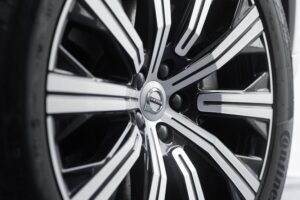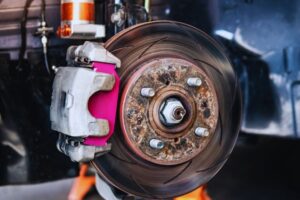Nitrogen-filled tires have been a popular choice for many drivers due to their perceived benefits over traditional air-filled tires.
Nitrogen can help maintain tire pressure for a longer period, leading to improved fuel efficiency, longer tire life, and better handling.
While many drivers opt for nitrogen-filled tires at their local service station, it is also possible to fill tires with nitrogen at home.
While filling tires with nitrogen at home can be a cost-effective and convenient option for many drivers, it is essential to note that nitrogen-filled tires do not eliminate the need for regular tire maintenance.
Tires still need to be inspected regularly for wear and tear, and tire pressure should be checked at least once a month.
Additionally, nitrogen-filled tires are not immune to punctures or blowouts, so drivers should still exercise caution while on the road.
Understanding Nitrogen Inflation
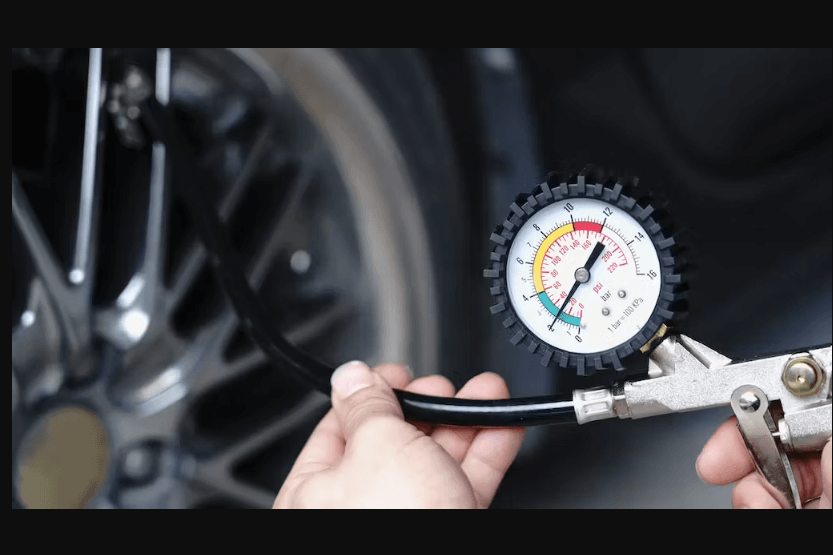
Nitrogen inflation is a process of filling the tires of a vehicle with pure nitrogen instead of compressed air. Nitrogen is an inert gas that makes up about 78% of the Earth’s atmosphere. It is a colorless, odorless, and tasteless gas that is non-flammable and non-toxic.
Nitrogen-filled tires have become increasingly popular in recent years due to the perceived benefits that they offer. One of the main benefits of using nitrogen in tires is that it is less likely to leak out of the tire than compressed air. This is because nitrogen molecules are larger than oxygen molecules, and they are less likely to seep through the rubber of the tire.
Another advantage of nitrogen inflation is that it can help to maintain tire pressure for a longer period of time. Nitrogen is less affected by changes in temperature than compressed air, so it is less likely to expand or contract with temperature changes. This means that nitrogen-filled tires may need to be checked and adjusted less frequently than tires filled with compressed air.
While nitrogen inflation may seem like a good idea, it is important to note that it is not necessary for all vehicles. The benefits of nitrogen inflation may only be noticeable in certain driving conditions or for certain types of vehicles. Additionally, nitrogen inflation can be more expensive than filling tires with compressed air.
Why Use Nitrogen Instead of Regular Air
Nitrogen is an inert gas that is commonly used to fill tires instead of regular air. While air is made up of approximately 78% nitrogen, 21% oxygen, and 1% other gases, filling tires with pure nitrogen offers several benefits.
One of the main advantages of using nitrogen instead of regular air is that it is less prone to permeation. Tires filled with regular air can lose pressure over time as the oxygen in the air slowly seeps through the tire’s rubber. Nitrogen molecules, on the other hand, are larger and less likely to escape through the tire’s rubber, resulting in more consistent tire pressure and better fuel efficiency.
Another benefit of using nitrogen is that it is less likely to contain moisture. Compressed air systems at most tire shops have moisture separators that limit the amount of water vapor in the compressed air supply. However, even a small amount of moisture in the air can cause the inside of the tire to rust and corrode over time. Nitrogen, on the other hand, is dry and won’t cause rust or corrosion.
Using nitrogen in tires can also help to extend the life of the tire. Oxygen can cause the rubber in the tire to degrade over time, leading to cracks and other damage. Nitrogen, on the other hand, is less reactive and won’t cause the rubber to degrade as quickly.
Benefits of Nitrogen-Filled Tires

Nitrogen-filled tires are becoming increasingly popular among car owners due to the many benefits they offer. Here are some of the advantages of using nitrogen to fill your car’s tires:
Improved Tire Performance
Nitrogen-filled tires provide better handling, improved fuel efficiency, and longer tire life compared to tires filled with regular air.
Nitrogen molecules are larger than oxygen molecules, making it less likely for the gas to seep through the rubber tire walls. This means that the tire pressure remains more stable, and the tire maintains its optimal shape, resulting in better handling and improved tire performance.
Better Fuel Efficiency
Nitrogen-filled tires can improve fuel efficiency by up to 10%. This is because the tire pressure remains more stable, reducing the rolling resistance of the tire. This, in turn, reduces the amount of fuel needed to power the vehicle, resulting in better fuel efficiency and lower fuel costs.
Temperature Stability
Nitrogen-filled tires are more resistant to temperature changes, which can affect tire pressure. This means that the tire pressure remains more stable, even in extreme temperatures, resulting in better handling and improved tire performance.
Longer Tire Life
Nitrogen-filled tires can last longer than tires filled with regular air. This is because the tire pressure remains more stable, reducing the wear and tear on the tire. This, in turn, results in longer tire life and lower tire replacement costs.
Drawbacks of Nitrogen-Filled Tires
While nitrogen-filled tires have their advantages, there are also some drawbacks to consider. Here are some of the most significant disadvantages of nitrogen-filled tires:
Cost
One of the biggest drawbacks of nitrogen-filled tires is the cost. While the cost of filling your tires with nitrogen varies depending on where you live, it is generally more expensive than filling your tires with regular air. Additionally, nitrogen-filled tires require more frequent maintenance, which can also add to the overall cost.
Availability
Another disadvantage of nitrogen-filled tires is that they are not as widely available as regular air. While some tire shops and dealerships offer nitrogen tire filling services, not all of them do. This means that if you need to top off your tires while on the road, you may not be able to find a nitrogen filling station nearby.
Disadvantages of Nitrogen-Filled Tires
There are also some disadvantages of nitrogen-filled tires to consider. For example, nitrogen molecules are larger than oxygen molecules, which means that they can leak out of your tires more slowly. However, this also means that if you do have a leak, it may be more difficult to detect since the tire pressure will drop more slowly.
Additionally, while nitrogen-filled tires are less likely to experience temperature-related pressure changes, they are not immune to them. This means that you will still need to check your tire pressure regularly, even if you have nitrogen-filled tires.
Finally, while nitrogen-filled tires may help to reduce tire wear and improve fuel economy, the benefits are generally small and may not be noticeable to most drivers.
Impact on Tire Wear and Longevity
Filling tires with nitrogen can have a positive impact on tire wear and longevity. Nitrogen molecules are larger than oxygen molecules, which means they are less likely to permeate through the rubber of the tire. This leads to a slower rate of pressure loss, which can help the tire maintain its shape and reduce the amount of wear on the tire.
Rubber is a porous material, and oxygen can slowly seep through the rubber and react with the chemicals in the rubber. This process is called oxidation and can cause the rubber to become brittle and crack over time. By using nitrogen instead of oxygen, the tire’s oxidation process can be slowed down, which can extend the life of the tire.
In addition to reducing oxidation, nitrogen-filled tires can also help reduce tire wear. When the tires are filled with nitrogen, they maintain their pressure more consistently, which can reduce the amount of friction between the tire and the road surface. This can help reduce the amount of wear on the tire, which can increase its longevity.
It is important to note that while nitrogen can help reduce tire wear and increase tire longevity, it is not a panacea. Tires still need to be properly maintained and checked regularly for signs of wear or damage. Regular tire maintenance, including proper inflation, rotation, and alignment, is still necessary to ensure that the tires are performing at their best.
How to Fill Tires with Nitrogen at Home
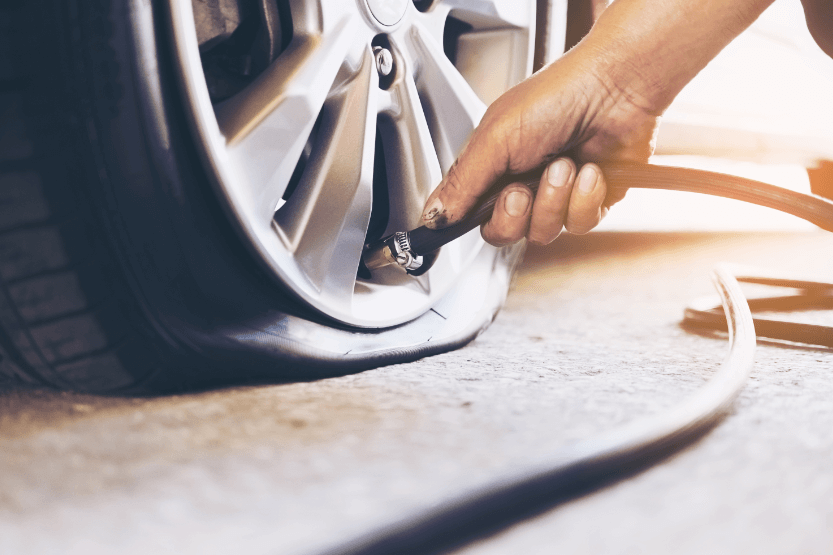
Filling tires with nitrogen at home is a convenient and affordable system for car owners. It requires a nitrogen tank or cylinder, which can be purchased from welding suppliers or found through a yellow pages search. The tank should be a mid-sized cylinder that holds about 300 cubic feet of nitrogen, which will be enough for about 60 refills.
To safely store nitrogen, it’s recommended to use a cylinder with lightweight alloy components or rust-free aluminum-alloy nitrogen cylinders. Steel nitrogen cylinders are also available, but they can be heavy and prone to rust. A new regulator and micro-gauge are also needed to ensure proper inflation.
For home top-offs or mobile use, a 33 cubic foot cylinder is a convenient system. Cylinder refills can be done through a swap or refill at welding suppliers or other authorized dealers.
Steps for filling tires with nitrogen at home are as follows:
- Remove the regular air from the tire by deflating it completely.
- Connect the nitrogen cylinder to the tire valve stem using a portable inflation tool.
- Fill the tire with nitrogen to the recommended pressure level. This can be found on a sticker located on the driver’s side door jamb or in the car owner’s manual.
- Use a micro-gauge to check the tire pressure and adjust as necessary.
Benefits of using nitrogen in tires include improved tire pressure stability, extended tire life, improved fuel efficiency, and reduced risk of tire explosions during use. However, there are also drawbacks such as the initial cost of equipment or tank rental and the additional labor involved in filling tires properly with nitrogen.
Professional Nitrogen Tire Services
While it is possible to fill tires with nitrogen at home, some drivers may prefer to have their tires filled by a professional. Tire dealers and automotive service facilities often offer nitrogen tire inflation as a service.
One of the benefits of using a professional nitrogen tire service is that they typically use high-quality nitrogen gas, which can be more pure than the nitrogen that is available for home use. Additionally, a professional service may use specialized equipment to ensure that the tires are filled to the correct pressure and that all of the air is purged from the tire before filling it with nitrogen.
Another advantage of using a professional nitrogen tire service is that they can perform other tire maintenance tasks at the same time. For example, if a driver needs new tires, the service can install them and fill them with nitrogen at the same time. Additionally, many dealers and service facilities offer nitrogen top-offs, which can help drivers maintain the correct tire pressure over time.
It’s worth noting that not all car dealerships and tire dealers offer nitrogen tire services. Drivers who are interested in using nitrogen should check with their local dealerships and service facilities to see if they offer this service.
Finally, drivers who are interested in using nitrogen in their tires may want to consider purchasing nitrogen valve caps. These caps are designed to help keep the nitrogen in the tire and prevent air from entering. While they are not necessary, they can be a helpful addition for drivers who want to get the most out of their nitrogen-filled tires.
Types of Tires Suitable for Nitrogen Inflation

Nitrogen inflation is suitable for all types of tires, including all-season tires and performance tires. However, not all tires require nitrogen inflation, and it may not be necessary to use nitrogen in tires of all kinds.
All-season tires are designed to provide good performance in a variety of weather conditions and are suitable for nitrogen inflation. Nitrogen inflation can help maintain the tire pressure for a longer period of time, which can improve fuel efficiency and extend the life of the tire.
Performance tires are designed for high-speed driving and may require higher tire pressure. Nitrogen inflation can help maintain the optimal tire pressure for longer periods, which can improve handling and performance.
While nitrogen inflation is suitable for all types of tires, it is not necessary for all tires. Regular air can also be used to inflate tires, and it is important to maintain the recommended tire pressure regardless of the inflation method used.
It is also important to note that not all tires are designed for nitrogen inflation. Some tires may have specific requirements for inflation, and it is important to follow the manufacturer’s recommendations.
Overall, nitrogen inflation can be beneficial for all types of tires, but it is important to consider the specific needs of each tire before deciding to use nitrogen.
Safety Considerations
When filling tires with nitrogen at home, safety should always be a top priority. Nitrogen is a safe gas to use in tires, but it is important to follow proper safety procedures to avoid any potential hazards.
One of the most important safety considerations is to ensure that the nitrogen tank is secured and stored in a well-ventilated area. Nitrogen is an odorless and colorless gas, and if a leak were to occur, it could quickly displace the oxygen in the room and create a dangerous situation.
It is also important to use the proper equipment when filling tires with nitrogen. This includes a nitrogen tank, a regulator, and a tire inflator with a nitrogen conversion kit. Using the wrong equipment can result in overinflation, which can lead to blowouts and other safety hazards.
Another safety consideration is to never inflate a tire beyond its recommended pressure rating. Overinflation can cause the tire to become unstable and increase the risk of a blowout. It is also important to check the tire pressure regularly and adjust it as needed to ensure that the tires are properly inflated.
In heavy-duty applications, such as commercial trucks and buses, it is especially important to use nitrogen-filled tires. These vehicles are subject to more wear and tear than passenger cars, and nitrogen-filled tires can help reduce the risk of blowouts and other safety hazards.
It is also important to be aware of heat-related pressure warnings. Nitrogen-filled tires can help reduce the risk of pressure loss due to changes in temperature, but it is still important to monitor tire pressure regularly and adjust it as needed.
To Summarize
In summary, filling tires with nitrogen at home is a straightforward process that can be done with the right equipment and supplies. The key steps involved in filling tires with nitrogen include removing as much air as possible from the tires, refilling them with nitrogen, and ensuring that the nitrogen fill is at the appropriate level.
While nitrogen-filled tires can offer a range of benefits, including improved fuel efficiency, better handling, and longer tire life, it is important to note that these benefits may not be significant enough to justify the cost of purchasing nitrogen equipment or paying for professional nitrogen tire fills.
Moreover, it is important to keep in mind that nitrogen-filled tires are not immune to punctures, leaks, or other tire-related issues. Regular tire maintenance, including checking tire pressure and inspecting for damage, is still necessary to ensure optimal tire performance and safety.
Overall, while filling tires with nitrogen can offer certain advantages, it is up to each individual to weigh the potential benefits against the costs and determine whether nitrogen tire fills are the right choice for their needs and budget.

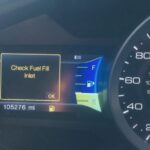
![Who Makes Milestar Tires? [Milestar Tires Review] who makes milestar tires](https://roadsumo.com/wp-content/uploads/2021/05/who-makes-milestar-tires-150x150.jpeg)

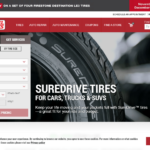
![Travelstar Tires Review [Are They Good? Who Makes Travelstar Tires?] travelstar tires](https://roadsumo.com/wp-content/uploads/2021/06/travelstar-tires-150x150.jpg)
![How Much Is a Used Tire? Average Cost of Used Tires [Guide] how much is a used tire](https://roadsumo.com/wp-content/uploads/2022/03/how-much-is-a-used-tire-150x150.jpg)
